 Libri di Witold Rybczynski su Unilibro.it
)
Libri di Witold Rybczynski su Unilibro.it
)
|
|
1919 |
 Title :
Charleston Fancy
Title :
Charleston FancyAuthor: Witold Rybczynski Publisher: YALE UNIVERSITY PRESS ACADEMIC € 20,20
|
|
|
1918 |
 Title :
Mysteries of the Mall
Title :
Mysteries of the MallAuthor: Rybczynski Witold Publisher: Farrar Straus & Giroux € 16,60
|
|
|
1917 |
 Title :
Now I Sit Me Down
Title :
Now I Sit Me DownAuthor: Rybczynski Witold Publisher: Farrar Straus & Giroux € 14,30
|
|
|
1916 |
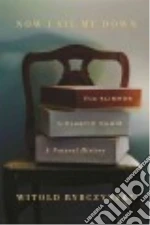 Title :
Now I Sit Me Down
Title :
Now I Sit Me DownAuthor: Rybczynski Witold Publisher: Farrar Straus & Giroux € 24,40
|
|
|
1915 |
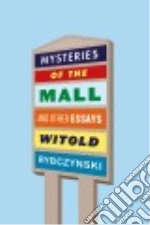 Title :
Mysteries of the Mall
Title :
Mysteries of the MallAuthor: Rybczynski Witold Publisher: Farrar Straus & Giroux A deep exploration of modern life that examines our cities, public places, and homes € 24,90
|
|
|
1914 |
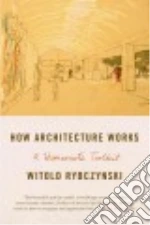 Title :
How Architecture Works
Title :
How Architecture WorksAuthor: Rybczynski Witold Publisher: Farrar Straus & Giroux An essential toolkit for understanding architecture as both art form and the setting for our everyday lives We spend most of our days and nights in buildings, living and working and sometimes playing. Architecture is both the setting for our everyday lives and a public art form—but it remains mysterious to most of us. € 15,20
|
|
|
1913 |
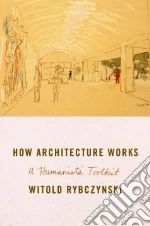 Title :
How Architecture Works
Title :
How Architecture WorksAuthor: Rybczynski Witold Publisher: Farrar Straus & Giroux An essential toolkit for understanding architecture as both art form and the setting for our everyday lives € 24,90
|
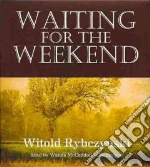 Title :
Waiting for the Weekend (CD Audiobook)
Title :
Waiting for the Weekend (CD Audiobook)Author: Rybczynski Witold, McCaddon Wanda (NRT) Publisher: Blackstone Audio Inc € 25,50
|
|
1911 |
 Title :
Waiting for the Weekend (CD Audiobook)
Title :
Waiting for the Weekend (CD Audiobook)Author: Rybczynski Witold, McCaddon Wanda (NRT) Publisher: Blackstone Audio Inc € 26,80
|
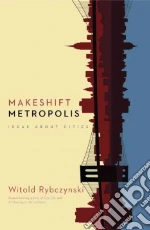 Title :
Makeshift Metropolis
Title :
Makeshift MetropolisAuthor: Rybczynski Witold Publisher: Scribner In this new work, prizewinning author, professor, and Slate architecture critic Witold Rybczynski returns to the territory he knows best: writing about the way people live, just as he did in the acclaimed bestsellers Home and A Clearing in the Distance. In Makeshift Metropolis, Rybczynski has drawn upon a lifetime of observing cities to craft a concise and insightful book that is at once an intellectual history and a masterful critique. Makeshift Metropolis describes how current ideas about urban planning evolved from the movements that defined the twentieth century, such as City Beautiful, the Garden City, and the seminal ideas of Frank Lloyd Wright and Jane Jacobs. If the twentieth century was the age of planning, we now find ourselves in the age of the market, Rybczynski argues, where entrepreneurial developers are shaping the twenty-first-century city with mixed-use developments, downtown living, heterogeneity, density, and liveliness. He introduces readers to projects like Brooklyn Bridge Park, the Yards in Washington, D.C., and, further afield, to the new city of Modi'in, Israel—sites that, in this age of resource scarcity, economic turmoil, and changing human demands, challenge our notion of the city. Erudite and immensely engaging, Makeshift Metropolis is an affirmation of Rybczynski's role as one of our most original thinkers on the way we live today. € 15,50
|
|
1910 |
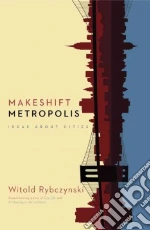 Title :
Makeshift Metropolis
Title :
Makeshift MetropolisAuthor: Rybczynski Witold Publisher: Simon & Schuster In this new work, prizewinning author, professor, and Slate architecture critic Witold Rybczynski returns to the territory he knows best: writing about the way people live, just as he did in the acclaimed bestsellers Home and A Clearing in the Distance. In Makeshift Metropolis, Rybczynski has drawn upon a lifetime of observing cities to craft a concise and insightful book that is at once an intellectual history and a masterful critique. Makeshift Metropolis describes how current ideas about urban planning evolved from the movements that defined the twentieth century, such as City Beautiful, the Garden City, and the seminal ideas of Frank Lloyd Wright and Jane Jacobs. If the twentieth century was the age of planning, we now find ourselves in the age of the market, Rybczynski argues, where entrepreneurial developers are shaping the twenty-first-century city with mixed-use developments, downtown living, heterogeneity, density, and liveliness. He introduces readers to projects like Brooklyn Bridge Park, the Yards in Washington, D.C., and, further afield, to the new city of Modi'in, Israel—sites that, in this age of resource scarcity, economic turmoil, and changing human demands, challenge our notion of the city. Erudite and immensely engaging, Makeshift Metropolis is an affirmation of Rybczynski's role as one of our most original thinkers on the way we live today. € 17,40
|
|
|
2008 |
 Title :
Views of Seaside
Title :
Views of SeasideAuthor: Seaside Institute (COR), HRH Prince Of Wales (COR), Rybczynski Witold (CON), Prescott John (CON), Stern Robert A. M. (CON) Publisher: Rizzoli Intl Pubns Seaside, Florida, is a town designed as an 'ideal' community, where houses have front porches and verandas, picket fences, sleeping porches, where streets are carved and paved with brick, and sidewalks are made of pebbles and seashells. This resort town on Florida's panhandle coast has had an extraordinary impact on the thinking of architects, developers, planners, traffic engineers, sociologists, environmentalists, and even political thinkers. As the first, the most widely published, and now at twenty-five by far the most esteemed and well-known example of the revival of traditional neighborhood design, Seaside has become the icon of the New Urbanism movement, and has been emulated extensively. € 40,20
|
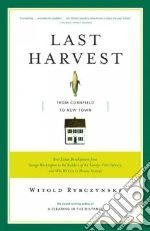 Title :
Last Harvest
Title :
Last HarvestAuthor: Rybczynski Witold Publisher: Scribner When Witold Rybczynski first heard about New Daleville, it was only a developer's idea, attached to ninety acres of cornfield an hour and a half west of Philadelphia. Over the course of five years, Rybczynski met and talked to everyone involved in the building of this residential subdivision -- from the developers to the township leaders, whose approval they needed, to the home builders and engineers and, ultimately, the first families who moved in. Always eloquent and illuminating, the award-winning author of Home and A Clearing in the Distance looks at this 'neotraditional' project, with its houses built close together to encourage a sense of intimacy and community, and explains the trends in American domestic architecture -- from where we place our kitchens and fences to why our bathrooms get larger every year. Last Harvest was voted one of the ten best books of 2008 by the editors of Planetizen, and as Publishers Weekly said, 'Rybczynski provides historical and cultural perspectives in a style reminiscent of Malcolm Gladwell, debunking the myth of urban sprawl and explaining American homeowners' preference for single-family dwellings.' € 16,10
|
|
2006 |
 Title :
Vizcaya
Title :
VizcayaAuthor: Rybczynski Witold, Olin Laurie, Brooke Steven (PHT) Publisher: Univ of Pennsylvania Pr The Miami estate of Vizcaya, like its palatial contemporaries Biltmore and San Simeon, represents an achievement of the Gilded Age, when country houses and their gardens were a conspicuous measure of personal wealth and power. € 35,70
|
|
|
2005 |
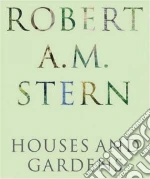 Title :
Robert A. M. Stern
Title :
Robert A. M. SternAuthor: Stern Robert A. M., Rybczynski Witold (INT) Publisher: Monacelli Pr Robert A. M. Stern is dedicated to the synthesis of tradition and innovation. In more than thirty-five years of practice, he has produced a wide range of building types with a variety of stylistic influences, all inspired by the great legacy of American architecture. His firm, Robert A. M. Stern Architects, was first recognized for its distinguished houses, and residential design remains the cornerstone of the practice. This beautifully illustrated monograph—a companion to the best-selling Robert A. M. Stern: Houses—presents twenty-six of the firm's most memorable houses. Located in diverse settings across North America—from a valley in Colorado with sweeping views of the Aspen mountains to a bluff overlooking Long Island Sound to an island off the coast of British Columbia—these remarkable houses reveal the architect's emphasis on the importance of context and his dedication to exploring the nature of space. Each house invokes the vernacular architectural heritage particular to its region while gracefully reflecting its unique natural surroundings. Whether they are Shingle Style 'cottages' by the sea, colonial Georgian country estates, or elegant Regency designs, Stern's houses are unique both for their timelessness and their ability to evoke a conversation with the past—a dialogue he believes lies at the heart of architecture. Pilar Viladas is the design editor of the New York Times Magazine. € 75,90
|
|
|
2004 |
 Title :
A Journey Through Texas
Title :
A Journey Through TexasAuthor: Olmsted Frederick Law, Rybczynski Witold (INT) Publisher: Bison Books Before he became America's foremost landscape architect, Frederick Law Olmsted (1822–1903) was by turns a surveyor, merchant seaman, farmer, magazine publisher, and traveling newspaper correspondent. In 1856–57 he took a saddle trip through Texas to see the country and report on its lands and peoples. His description of the Lone Star State on the eve of the Civil War remains one of the best accounts of the American West ever published. Unvarnished by sentiment or myth making, based on firsthand observations, and backed with statistical research, Olmsted's narrative captures the manners, foods, entertainments, and conversations of the Texans, as well as their housing, agriculture, business, exotic animals, changeable weather, and the pervasive influence of slavery. Back and forth from the Sabine to the Rio Grande, through San Augustine, Nacogdoches, San Marcos, San Antonio, Neu-Braunfels, Fredericksburg, Lavaca, Indianola, Goliad, Castroville, La Grange, Houston, Harrisburg, and Beaumont, Olmsted rode and questioned and listened and reported. Texas was then already a multiethnic and multiracial state, where Americans, Germans, Mexicans, Africans, and Indians of numerous tribes mixed uneasily. Olmsted interviewed planters, scouts, innkeepers, bartenders, housewives, drovers, loafers, Indian chiefs, priests, runaway slaves, and emigrants and refugees from every part of the known world—most of whom had 'gone to Texas' looking for a fresh start. He also observed the breathtaking arrival of spring on the prairie and the starry nights that seemed to prove the truth of the German saying “The sky seems nearer in Texas.” € 25,20
|
|
|
2003 |
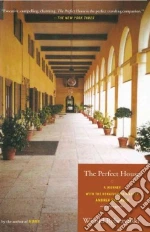 Title :
The Perfect House
Title :
The Perfect HouseAuthor: Rybczynski Witold Publisher: Simon & Schuster 'Palladio is the Bible,' Thomas Jefferson once said. 'You should get it and stick to it.' With his simple, gracious, perfectly proportioned villas, Andrea Palladio elevated the architecture of the private house into an art form during the late sixteenth century -- and his influence is still evident in the ample porches, columned porticoes, grand ceilings, and front-door pediments of America today. In The Perfect House, bestselling author Witold Rybczynski, whose previous books have transformed our understanding of domestic architecture, reveals how a handful of Palladio's houses in an obscure corner of the Venetian Republic should have made their presence felt hundreds of years later and halfway across the globe. More than just a study of one of history's seminal architectural figures, The Perfect House reflects Rybczynski's enormous admiration for his subject and provides a new way of looking at the special landscapes we call 'home' in the modern world. € 17,90
|
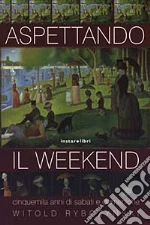 Title :
Aspettando il weekend. Cinquemila anni di sabati e domeniche
Title :
Aspettando il weekend. Cinquemila anni di sabati e domenicheAuthor: Rybczynski Witold Publisher: Instar Libri Witold Rybczynski, si interroga sull'improvvisa e in apparenza inattaccabile popolarità del sabato e della domenica nella storia dell'uomo, sulla trasversalità, nel tempo e nello spazio, di una pratica plasmata dalla credenza popolare e dall'uso quotidiano sulla matrice astronomica, religiosa, sociale, e forse persino biologica, di uno schema settenario necessario e misteriosamente radicato. Le curiose, puntuali, documentate e occasionalmente autobiografiche osservazioni che dedica alla formazione del ciclo settimanale chiamano in causa il tradizionale rapporto tra lavoro e tempo libero, e la sua lenta e graduale evoluzione. € 14,90
Scontato: € 6,71
|
|
2001 |
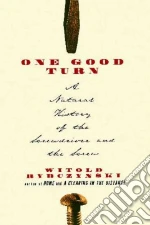 Title :
One Good Turn
Title :
One Good TurnAuthor: Rybczynski Witold Publisher: Scribner The Best Tool of the Millennium The seeds of Rybczynski's elegant and illuminating new book were sown by The New York Times, whose editors asked him to write an essay identifying 'the best tool of the millennium.' An award-winning author who once built a house using only hand tools, Rybczynski has intimate knowledge of the toolbox -- both its contents and its history -- which serves him beautifully on his quest. One Good Turn is a story starring Archimedes, who invented the water screw and introduced the helix, and Leonardo, who sketched a machine for carving wood screws. It is a story of mechanical discovery and genius that takes readers from ancient Greece to car design in the age of American industry. Rybczynski writes an ode to the screw, without which there would be no telescope, no microscope -- in short, no enlightenment science. One of our finest cultural and architectural historians, Rybczynski renders a graceful, original, and engaging portrait of the tool that changed the course of civilization. € 12,50
|
|
|
2000 |
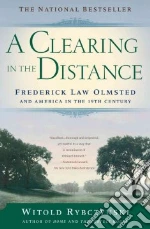 Title :
A Clearing in the Distance
Title :
A Clearing in the DistanceAuthor: Rybczynski Witold Publisher: Scribner In a brilliant collaboration between writer and subject, Witold Rybczynski, the bestselling author of Home and City Life, illuminates Frederick Law Olmsted's role as a major cultural figure at the epicenter of nineteenth-century American history. We know Olmsted through the physical legacy of his stunning landscapes -- among them, New York's Central Park, California's Stanford University campus, and Boston's Back Bay Fens. But Olmsted's contemporaries knew a man of even more extraordinarily diverse talents. Born in 1822, he traveled to China on a merchant ship at the age of twenty-one. He cofounded The Nation magazine and was an early voice against slavery. He managed California's largest gold mine and, during the Civil War, served as the executive secretary to the United States Sanitary Commission, the precursor of the Red Cross. Rybczynski's passion for his subject and his understanding of Olmsted's immense complexity and accomplishments make his book a triumphant work. In A Clearing in the Distance, the story of a great nineteenth-century American becomes an intellectual adventure. € 17,90
|
|
|
1999 |
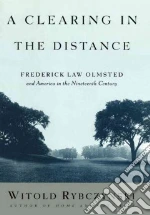 Title :
A Clearing in the Distance
Title :
A Clearing in the DistanceAuthor: Rybczynski Witold Publisher: Simon & Schuster In a brilliant collaboration between writer and subject, the bestselling author of Home and City Life illuminates Frederick Law Olmsted's role as a major cultural figure and a man at the epicenter of nineteenth-century American history. We know Olmsted through the physical legacy of his stunning landscapes -- among them, New York's Central Park, California's Stanford University campus, Boston's Back Bay Fens, Illinois's Riverside community, Asheville's Biltmore Estate, and Louisville's park system. He was a landscape architect before that profession was founded, designed the first large suburban community in the United States, foresaw the need for national parks, and devised one of the country's first regional plans. Olmsted's contemporaries knew a man of even more extraordinarily diverse talents. Born in 1822, he traveled to China on a merchant ship at the age of twenty-one. He cofounded The Nation magazine and was an early voice against slavery. He wrote books about the South and about his exploration of the Texas frontier. He managed California's largest gold mine and, during the Civil War, served as general secretary to the United States Sanitary Commission, the precursor of the Red Cross. Olmsted was both ruthlessly pragmatic and a visionary. To create Central Park, he managed thousands of employees who moved millions of cubic yards of stone and earth and planted over 300,000 trees and shrubs. In laying it out, 'we determined to think of no results to be realized in less than forty years,' he told his son, Rick. 'I have all my life been considering distant effects and always sacrificing immediate success and applause to that of the future.' To this day, Olmsted's ideas about people, nature, and society are expressed across the nation -- above all, in his parks, so essential to the civilized life of our cities. Rybczynski's passion for his subject and his understanding of Olmsted's immense complexity and accomplishments make this book a triumphant work. In A Clearing in the Distance, the story of a great nineteenth-century American becomes an intellectual adventure. € 49,60
|
|
|
1996 |
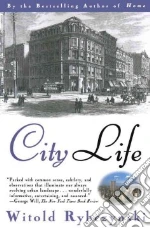 Title :
City Life
Title :
City LifeAuthor: Rybczynski Witold Publisher: Scribner Tracing the development of American cities and city life from early colonial settlements to the familiar downtowns of today, a sweeping cultural history reveals how our urban spaces have been shaped by the land and the American lifestyle. Reprint. 25,000 first printing. € 15,20
|
|
|
1993 |
 Title :
Looking Around
Title :
Looking AroundAuthor: Rybczynski Witold Publisher: Penguin Group USA From the opening sentences of his first book on architecture, Home, Witold Rybczynski seduced readers into a new appreciation of the spaces they live in. He also introduced us to 'an unerringly lucid writer who knows how to translate architectural ideas into layman's terms' (The Dallas Morning News). Rybczynski's vast knowledge, his sense of wonder, and his elegantly uncluttered prose shine on every page of his latest meditation on the art of building. Looking Around is about architecture as an art of compromise?between beauty and function, aspiration and engineering, builders and clients. It is the story of the Seagram Building in New York and the Wexner Center for the Visual Arts in Columbus, Ohio?a museum that opened without a single painting on view, so that critics could better appreciate its design. But what of the visitors who want a building that displays art well? What of those who work in the building? Looking Around explores the notion of the architect as superstar and assesses giants from Palladio to Michael Graves, styles from classicism to high tech. It demonstrates how architecture actually works?or doesn't?in corporate headquarters, airports, private homes, and the special buildings designed to represent our civilization. For all its erudition, Looking Around is also bracingly straightforward. Rybczynski looks closely and critically at structures that may once have dazzled us with their ostentation and expense, and sees them as triumphs or failures?of aesthetic ideals and of lasting function. This is a fascinating and illuminating book about an art form integral to our lives. € 16,10
|
|
|
1990 |
 Title :
Most Beautiful House in the World
Title :
Most Beautiful House in the WorldAuthor: Rybczynski Witold Publisher: Penguin Group USA Chronicles the work and insight that marked the author's experience as the boathouse he set out to build expanded to become a full-scale home, and contains observations about construction, space, and beginnings. € 13,90
|